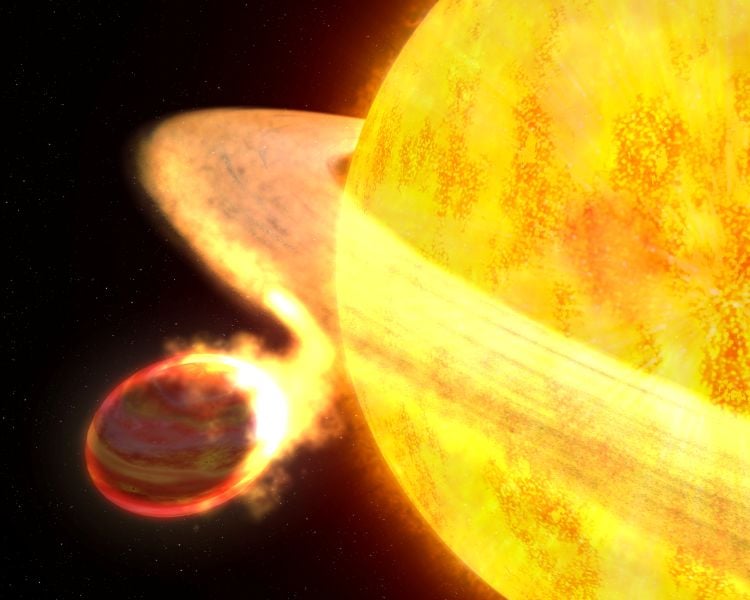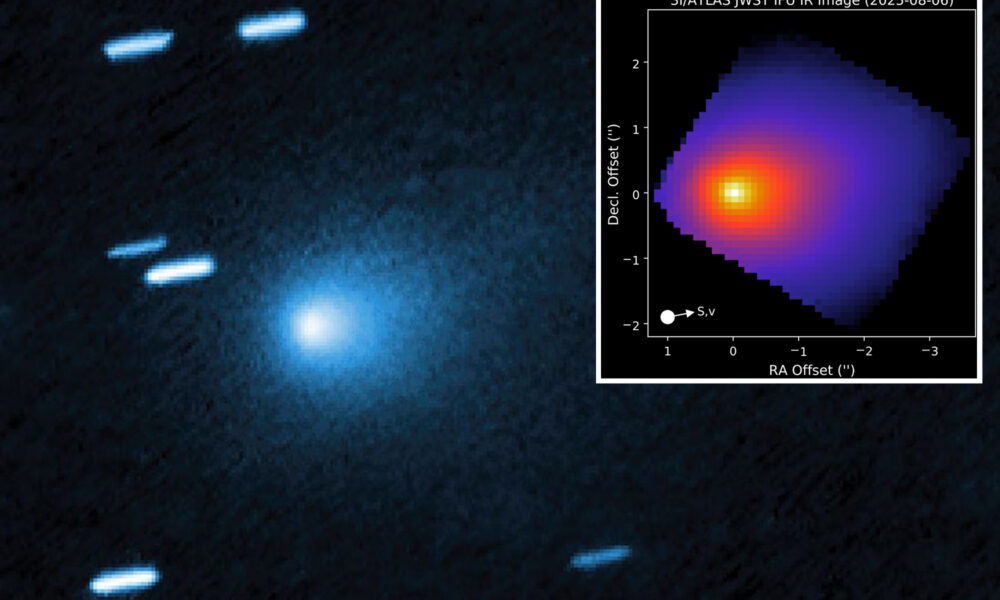A recent study published in *The Astronomical Journal* sheds light on the atmospheric escape of exoplanets orbiting F-type stars, which are larger and hotter than the Sun. An international team of scientists conducted this pioneering investigation, marking the first time such atmospheric phenomena have been examined in relation to these specific stars. The research is crucial as it explores how extreme temperatures and radiation from F-type stars can strip away the atmospheres of nearby planets.
The study focused on six exoplanets, analyzing data from ten transits using the Wide-field Infrared Camera (WIRC) at the Palomar Observatory, managed by the California Institute of Technology. The selected exoplanets included WASP-12 b, WASP-180 A b, WASP-93 b, HAT-P-8 b, WASP-103 b, and KELT-7 b. The researchers aimed to quantify the extent of atmospheric escape each planet experiences while orbiting their respective stars in close proximity.
Findings revealed that WASP-12 b and WASP-180 A b exhibited significant signs of atmospheric escape. In contrast, WASP-93 b and HAT-P-8 b showed potential indications of this phenomenon, while WASP-103 b and KELT-7 b displayed no detectable atmospheric loss. The atmospheric escape velocities for WASP-12 b and WASP-180 A b were found to be approximately 12.4 and 11.85 grams per second, respectively, highlighting the intensity of atmospheric loss these planets experience.
Previously, studies on atmospheric escape have largely concentrated on exoplanets orbiting K- and M-type stars, which are smaller and cooler than the Sun. In contrast, the extreme conditions surrounding F-type stars pose unique challenges for planetary atmospheres, leading to greater atmospheric stripping. This research underscores the need for further examination of exoplanets in these environments to enhance our understanding of their formation and evolution.
One primary motivation for investigating atmospheric escape is to gain insights into the long-term evolution of gas giants, often referred to as “hot” Jupiters and “ultra-hot” Jupiters. Understanding these dynamics aids in assessing the habitability potential of such exoplanets and the complex interactions between stars and their planets.
As researchers continue to explore the implications of atmospheric escape, the study emphasizes its significance in the broader context of exoplanet science. The findings not only provide valuable data for current planetary models but also pave the way for future investigations into atmospheric dynamics across various stellar environments.
The ongoing study of exoplanetary atmospheres will undoubtedly yield new insights, advancing our understanding of these distant worlds and their potential to host life. As the scientific community delves deeper into this area, the quest for knowledge about the universe continues.







